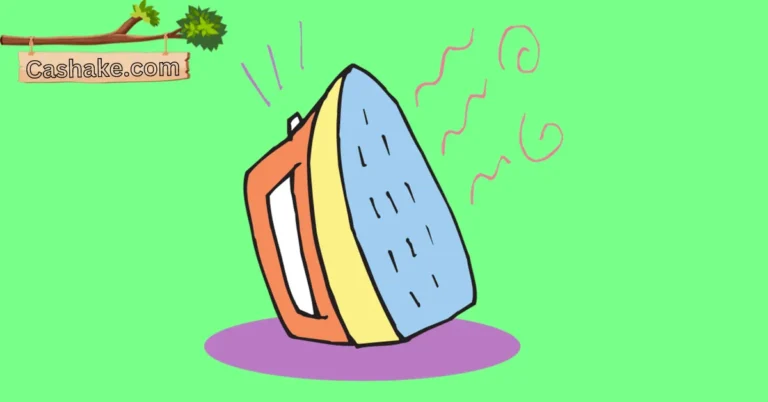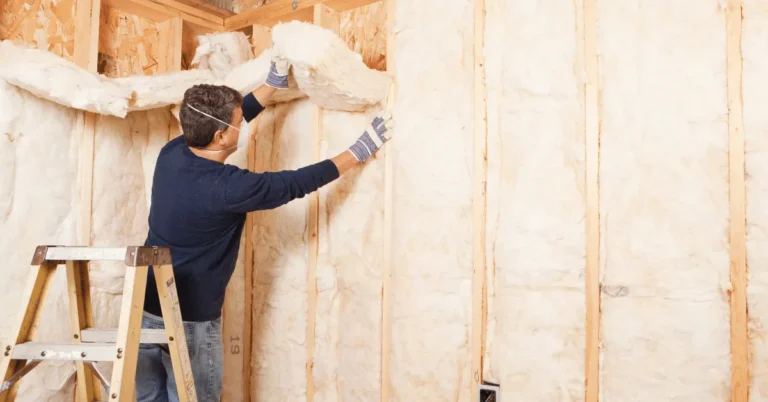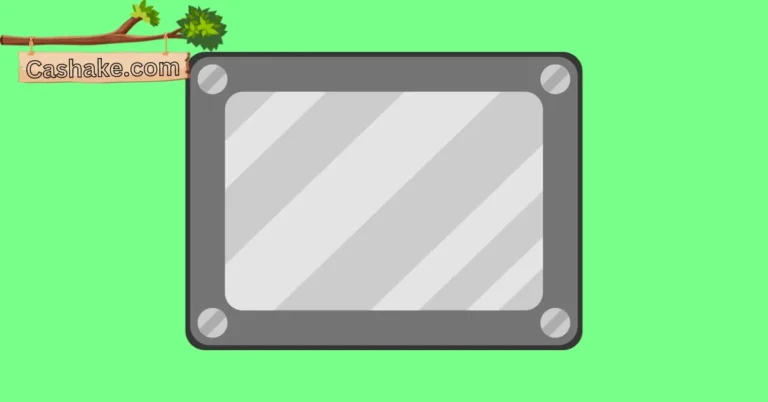For people who want to make furniture, shelves, and other home improvements, particle board is the best wood to use. If I started telling you about the uses of particle board then it wouldn’t be good since this article is about how do you cut particle board without chipping it.
When I searched on Google for this question, I found nothing but pages that were unrelated to it. So, I decided to write an article on this topic so that other nerds like me can get the best answer. So how do you cut a particle board without chipping it?
For beginners and professionals, there are three ways to cut particle board without chipping it. These methods include using a hand saw blade, a jigsaw, and a table saw. By using these three saws, you will be able to cut the particle board without chipping it.
If you want to know the exact steps and points for these three methods then you better keep reading this article as I will explain them in more detail.
Table of contents
- Why would particle board chip when cutting it?
- How to cut a particle board without chipping it? Explained with 3 methods
- What should you do after cutting the particle board to keep its cut from getting disturbed?
- How not to cut particle board, otherwise it will start chipping?
- FAQs
- Conclusion – How to cut particle board without chipping it?
Why would particle board chip when cutting it?
Before we go into the methods, first we need to know the reasons because if you don’t know the causes of the problem then I think it would be hard to solve the problem, right? So let me tell you some of the reasons why your particle board is chipping when you are cutting.
But before telling you the reasons you must know that getting chipped of particle board is in its nature. Because it is made from such materials that when get cut or separated they cause the chipping.
Now, let me tell you the reasons.
Reason #1.
The first reason is choosing the wrong tools. If you choose the dull blade or dull tools for cutting the particle board then it is obvious that your particle board is going to chip. One more thing using the wrong tools.
If you use a hammer instead of a cutter or blade to cut it then it is obvious that it would be idiotic and can cause the particle board to chip. I would recommend that you use the materials or tools for their purposes and not use them out of their purpose.
Reason #2.
You need to know, no matter, whether you are a beginner a professional DIYer, or a woodworker. The thing is, if you use the wrong technique to cut the particle board then it is 100% going to start chipping.
When you don’t know things then it is better to learn them and I appreciate that you are learning them here first before getting your particle board ruined, are you?

Wrong means, if you put a lot of pressure while cutting the board or you just try to cut it very quickly then it will cause the edges of the board to chip.
Reason #3.
If you do not support the particle board or fix it at the specific surface while cutting it, it would cause the board to get chipped because it will wobble and flex a lot.
Reason #4.
If you do not do scoring before cutting the particle board then it is so obvious that it will cause get chipped.
Scoring means creating a shallow groove along the cut line. It means that you should put a cut line as well first and then create a shallow groove as well.
With this shallow groove, the blade will automatically know where it should go and as the blade will go straight it means that the particle board will get cut straight and won’t chip.
Reason #5.
Most of the time it is seen that when people use the wrong tools to do any kind of jobs they get in so much trouble and get stuck in solving pairs of new problems.
So, before choosing any tools I would recommend that you should choose the sharp blade and not the dull one.
Because no matter what, you follow all of the things, if you don’t choose the sharp blade then chipping for a particle board will be a lot easier the dull blade will help the particle board to chip.
These are the common reasons that cause a particle board to chip. If you understand these reasons or problems, whatever you say, you can get your job done without getting involved in so many other problems. I hope you get my point.

Read More: Does Particle Board Break Easily? A Comprehensive Guide & 11 Tips
How to cut a particle board without chipping it? Explained with 3 methods
Now, there are so many options that you can choose from. But I have chosen the roots for this job. I mean I will tell you the methods according to three different blades. So, without further ado let’s get into the first method which is the hand Saw blade.
Method 1. Using a hand saw blade to cut the particle board
This method is a little bit risky but is cheaper, easier, and doable for everyone. So to do this you will need some of the tools. First, let’s gather the tools. Here are the tools that are required:
- Hand saw
- Pencil
- Clamps
- Utility knife
- Tape
Now, let’s start our process of cutting the particle board with the hand saw without chipping it.
Process:
First of all, it is so important to secure the particle board. And to secure you will need to clamp the board. And make sure that when you are clamping the board everything is going right.
I have seen some times that people do not clamp their wood right and then when it gets cut wrong after then they know that it is important first to tie the wood.
One more thing is that you should make sure that the edge that is going to be cut should overhang the edge of the workspace.
Next, after clamping you need to mark the cut line. It doesn’t matter if you are a professional woodworker or a beginner you should always mark the cut line whenever you are going to cut the wood. So mark the cut line with the pencil, and for that, you can use a scale or something straight.
After that score the line. And to score the line you can use the utility knife. Yes, it can be done with it. You don’t need any professional tools for that. Now this line will create the shallow groove which will guide the saw to cut the particle board straight.

Now, one more thing that you should do is put the masking tape on both sides of the particle board and you know why we use the tape, because it will give more help to the particle board to not get chipped.
After doing this much work, now, it is time to position the saw. The first thing that you should do is please stand behind the particle board and position the saw blade perpendicular to the cut line. And make sure that the teeth of the hand saw are pointing away from you.
Now, that’s it, it is time to start sawing. While sawing make sure that you put good pressure and I would say start slowly and steadily.
When you are sawing put the equal pressure and keep the same speed. And keep following the cut line.
And that’s it after cutting the particle board all you need to do is remove the clamps and the masking tape and you will see that in this process you haven’t seen your particle board get chipped.
Also after cutting the board if you see any cut edges then to remove them, you can use sandpaper and sand the particle board.
Now let’s move on to our next method.

Read More: Is Particle Board Dust Harmful? 2 Surprising Truths
Method 2. Using a Jigsaw to cut the particle board
So, this method is also the same but in it, you won’t get tired of cutting and moving the hand saw in or out. In this method, you will be using the jigsaw which works electrically and you will need to just move it with your hands.
Okay, let’s start, and before going into this method just like the hand saw way we need some tools. So, what tools you will need in this method are below. Here are the tools:
- Jigsaw
- Jigsaw blades
- Pencil
- Clamps
- Utility knife
- Masking tape
Now let’s start the process.
Process:
So, first, you will need to secure the particle board. You know without securing the particle board it will create a mess because when you start using the jigsaw on the board and you haven’t secured it then it will get moved from its space and will cause it to chip and be hard for you to cut it.
To secure the particle board you should use the clamps and firmly stabilize the particle board on the work surface. Please make sure that the edge that is going to get cut is overhang the edge of the work surface.
After that, you need to mark the cut line. And for that, you can use a pencil and a scale or anything straight.
So just put it on the particle board where you want the cut and mark the cut line. After marking the cut line you need to put the score line on the cut line.

To do that use the utility knife and score the cut line. What this will do is, create the shallow groove on the cut line and it will help the jigsaw and you to follow the right path while cutting the particle board.
So you have put the marked line and you have added the shallow groove, now you need to apply the masking tape to both sides of the line, it will save the particle board from chipping.
Now, insert the jigsaw blade in it and make sure that you have tightened the blade carefully because if you don’t then there will be consequences.
After putting the blade, set the jigsaw to slow speed and make sure that it is settled in orbital action for a smoother cut.
Now, press the “ON” button on the jigsaw to turn it on, and start cutting the particle board slowly. While you are cutting the particle board with a jigsaw make sure that you keep the jigsaw’s base plate against the particle board and keep following the marked line.
In this situation or method, you do not have to put pressure on the jigsaw or do something with your hands that you have done with the hand saw. All you need to do is just keep it slow and in the right direction.
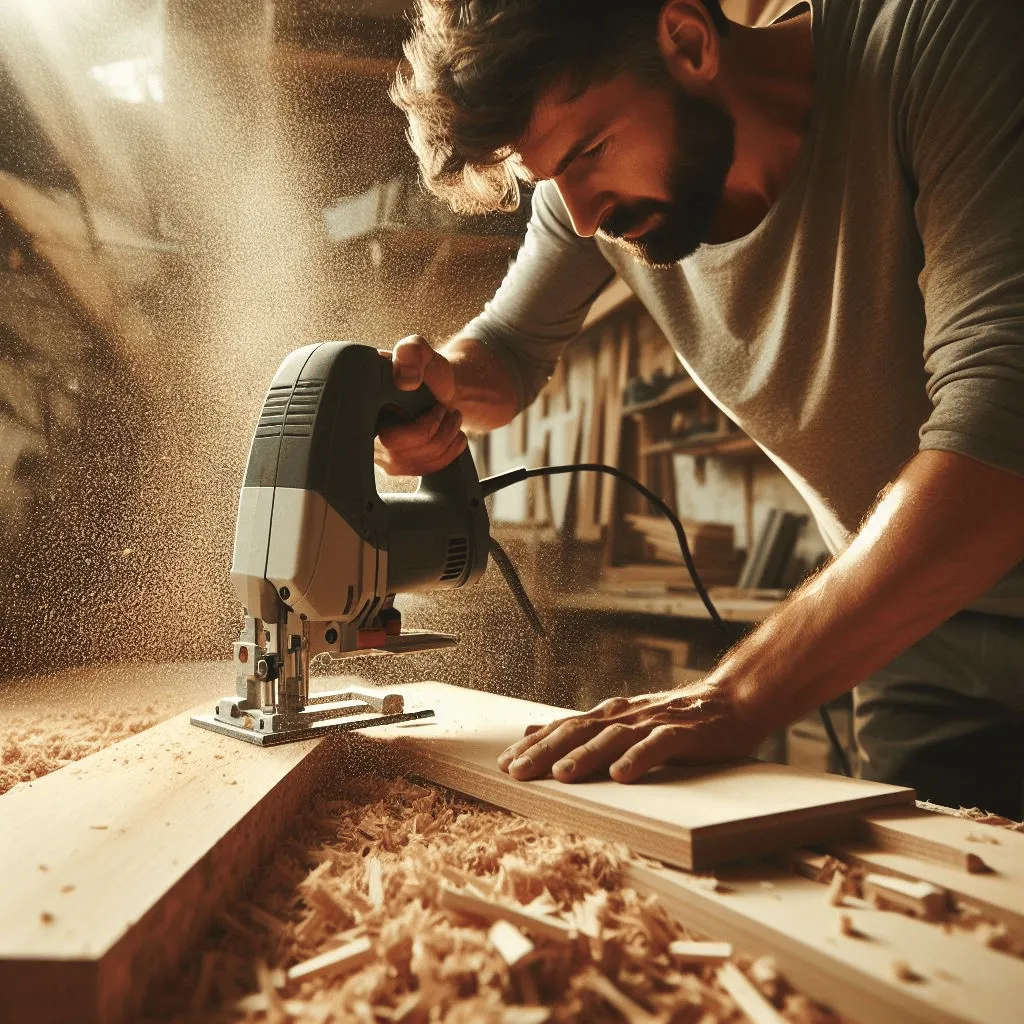
After cutting the particle board, turn off the jigsaw and make sure its switch is turned off after that remove the masking tape and use sandpaper to sand the particle board if you see edges that are not looking good to you.
Now, let’s move to our third method.
Method 3. Using a table saw
The third method is the table saw. It is for more professionals and is also an expensive way to cut particle boards. Let me tell you first that if you are a beginner or you have a small project or you are just seeking the information then you don’t have to follow this step.
On the other hand, if you are a complete professional or you want to learn this then you should read this method otherwise the above two are best for you.
Now let’s begin our this method. To do this you will need some tools as in the other methods. So, what are the tools this time? Here are the tools:
- Table saw
- Push stick
- Zero clearance insert
- Pencil
- Clamps
- Utility knife
- Masking tape
Process:
Now, let’s begin our process and make sure that our particle board doesn’t get chipped while performing this job.
So, first of all, as usual, you need to secure the particle board. To do this you will have to put the clamps to your particle board on the table saw and make sure that they are secure. Make sure that the particle board is flat from the downside and overhangs the edge of the table.
After doing that, now you need to install the zero clearance insert. In some table saws the zero clearance insert isn’t installed already so you must install it.
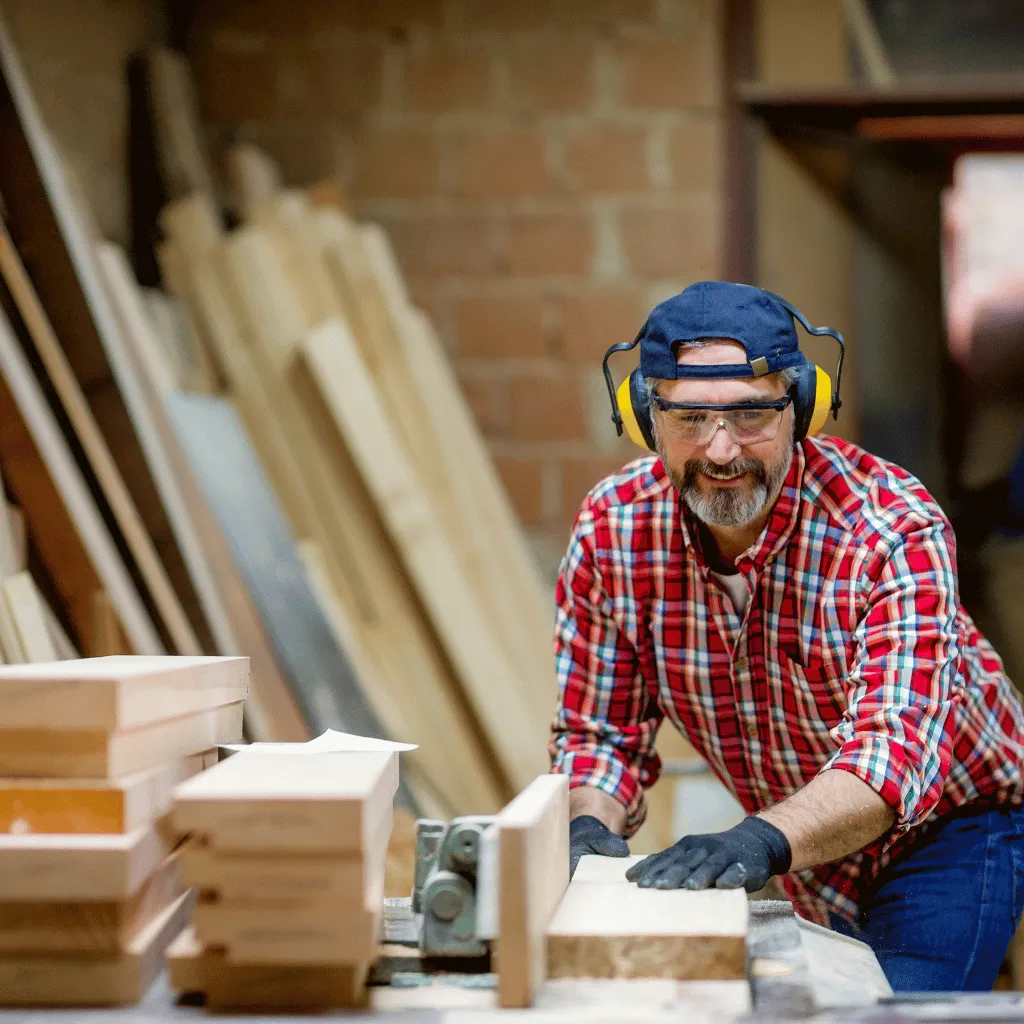
The use of this thing is very beneficial because it will help your particle board not get chipped. By the way, if you don’t know how to install it then you can read this guide from Instructables.com.
After installing it you need to mark the line as I have told you in the other methods. It is the same just keep the line straight with a straight thing. After that score the line and put the shallow groove which will make your cutting process easy.
After doing that you need to adjust the table saw blade. One best things that I want to include is that make sure that the blade is up enough that it can cut the particle board thoroughly. Make sure that the table saw’s blade is up at enough height.
Also, check that the blade is perpendicular to the table. After that, it is time to adjust the fence of the table saw. Please adjust the table saw fence according to the desired cutting width.
One more thing about the fence is to make sure that it is parallel to the saw blade and aligned with the marked cut line because you don’t want your particle board to be cut from else place.
Now, after doing this much work you need to turn on the table saw and do not start cutting the particle board until the blade has reached its full speed.
Now it is time to use the push stick. So, with the push stick now navigate the particle board along the fence and through the saw blade.
In this situation you don’t need to push hard the particle board, just keep the push pressure even and do not make a hard push, because as the blade will cut the particle board it will automatically suggest you push the board a little bit towards the blade.
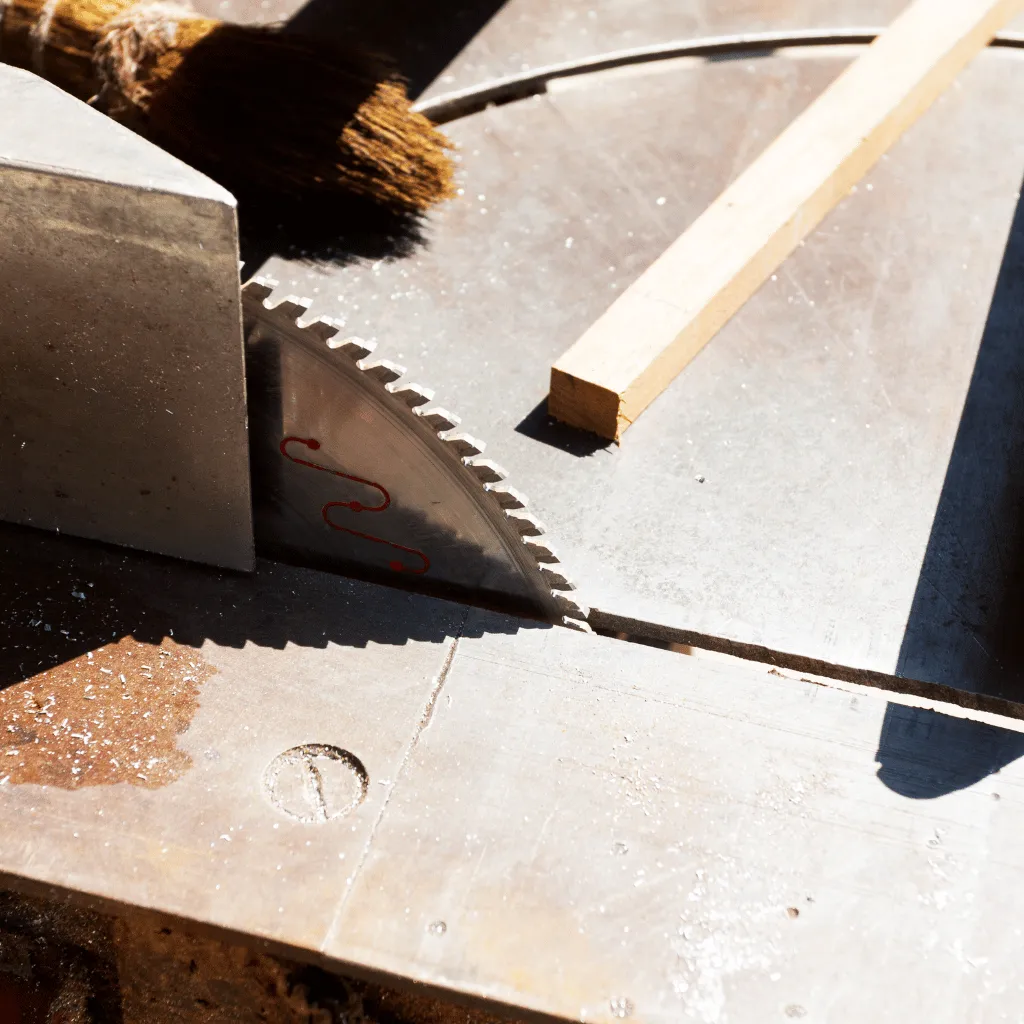
Upon finishing the cut, it’s essential to power off the table saw and ensure the saw blade has come to a complete stop. Subsequently, remove both the clamps and the tape to inspect your cut.
Now, as usual, if, there are some edges. I am sure that there won’t be any edges that need to be sanded. But still, if you needed then do it.
What should you do after cutting the particle board to keep its cut from getting disturbed?
When I was doing this research I found, that it’s good that you made the cut fine and your particle board didn’t get chipped, but after doing this what you should do so that the particle board’s edges don’t get chipped.
So, there are four main things that you can do to secure the edges of your particle board.
You can find a sealant or primer from different shops and after cutting your particle board you can add this and it will help your particle board’s edge to not get chipped or swelled.
You can use edge banding which is best of the best thing to do with your edges. And it can apply to different kinds of wood. Again you can buy it from wherever you find it and can secure your particle board.
The third thing that you won’t need to buy is sanding the edges. Yes, it is the best thing and I have seen a lot of professional woodworkers doing it. It won’t charge a single penny but it will be done in some time.
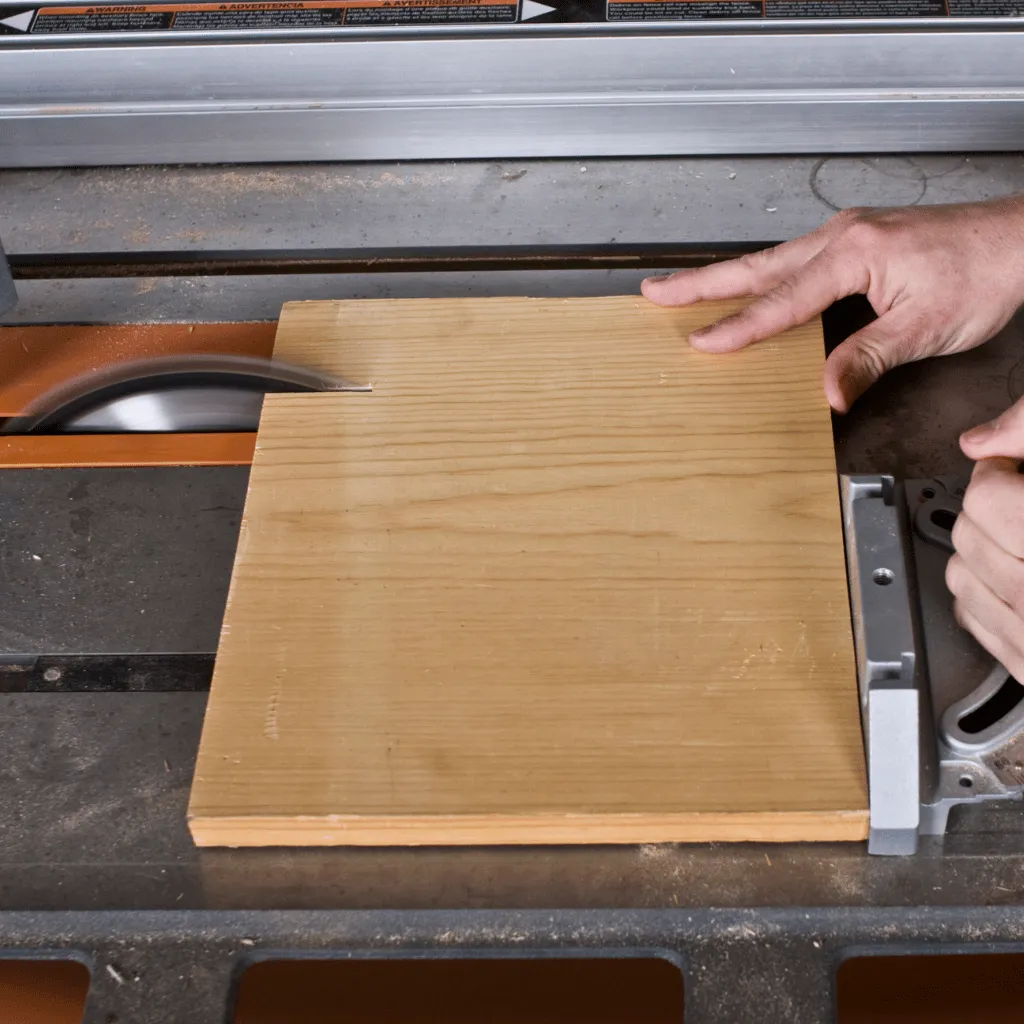
The fourth thing that you should do is paint your edges or stain them. It has two benefits. One it will be matched with your paint of the furniture which will look stunning and the other one it will get secured.
How not to cut particle board, otherwise it will start chipping?
It is very good for you to know how to cut particle board without chipping it, but knowing how NOT to cut it is also essential.
There are some mistakes that people make when cutting their particle boards. They oftentimes need to provide the project on time and do things fast as as they can. It is a good thing, I am not saying it is bad but doing it properly is the key.
So, oftentimes people just cut their particle boards in so much hurry which causes the particle board chipping.
When you are using the wrong tools and when you are using the less sharp tools can cause the particle board to chipping and I would recommend that you don’t do that.
Make sure that you use the masking tape and the score line while cutting the particle board. Use the specific blades for this specific job.
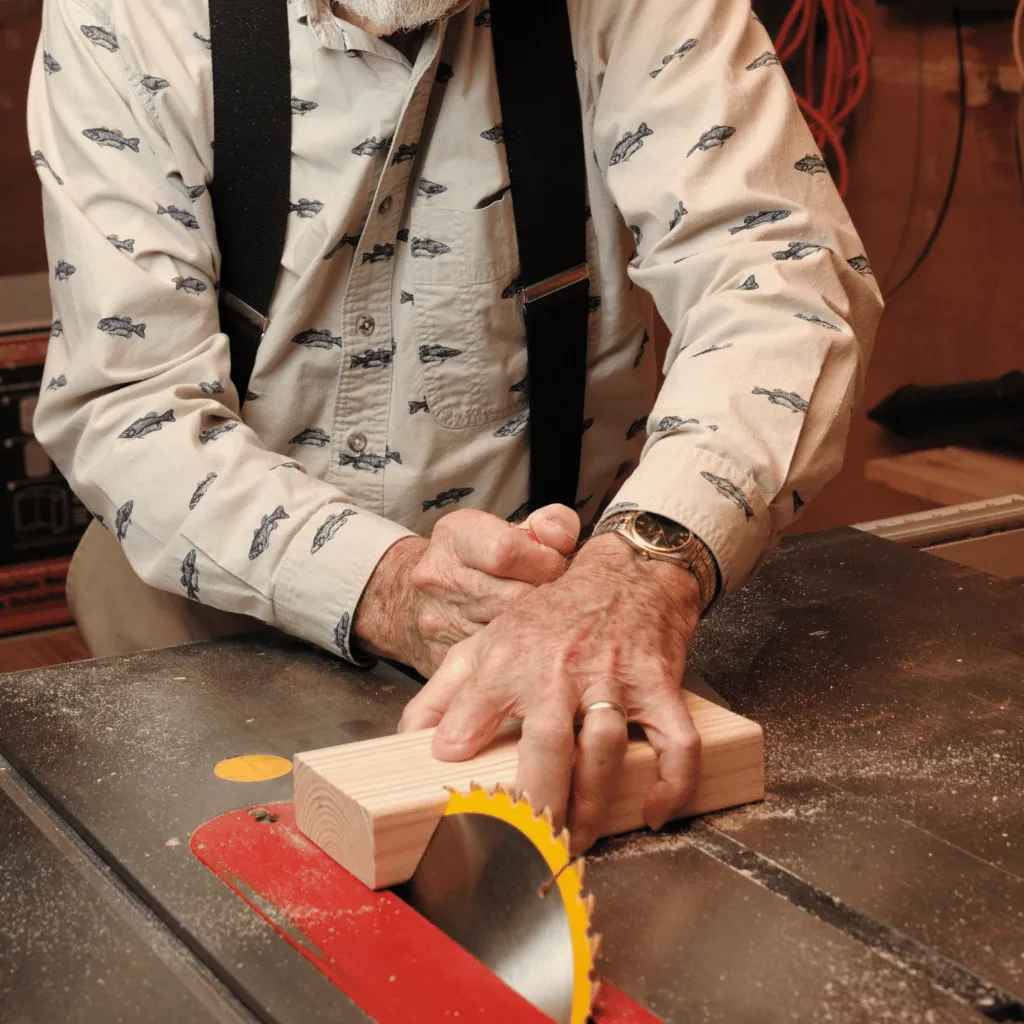
FAQs
The best tool for cutting particle boards without chipping is a table saw. However, if you do not have a table saw, you can use a jigsaw or a hand saw.
The best blade for cutting particle board without chipping is a sharp carbide-tipped blade with a high tooth count.
To prevent particle board from chipping when cutting it with a hand saw, you should:
1. Score the cut line with a utility knife before cutting.
2. Use a sharp blade.
3. Apply masking tape to both sides of the particle board along the cut line.
4. Clamp the particle board securely to your work surface.
5. Cut slowly and evenly.
To prevent particle board from chipping when cutting it with a jigsaw, you should:
1. Use a sharp blade with a high tooth count.
2. Set the jigsaw to a slow speed.
3. Clamp the particle board securely to your work surface.
4. Keep the jigsaw’s base plate against the particle board as you cut.
5. Cut slowly and evenly.

Conclusion – How to cut particle board without chipping it?
So, in the end, I just want to tell you that, yes, it is easy to cut your particle without chipping it. If you follow the guides and follow one of the methods precisely then I am very confident that you will get your final cut easily.
Please do not cut your particle board in a hurry which will cause your particle board to chip and also make sure that you are using the right tools and you are using them right.
I hope you have got the answer, if you have any other questions then you can ask in the comment box and I will give you the answer as soon as possible. Till then stay safe, stay motivated, and keep exploring.





